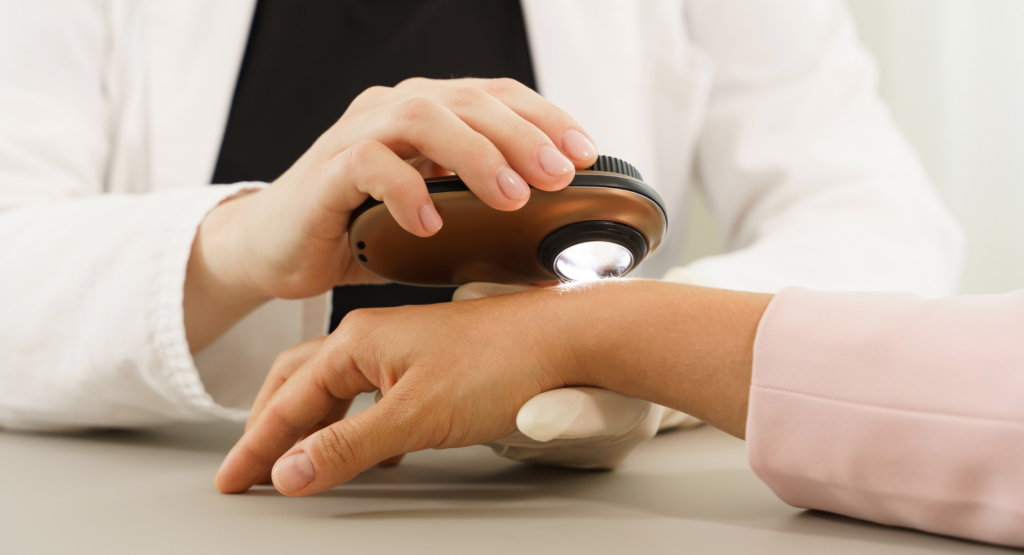Securing a dermatopathology job within a dermatology practice requires careful evaluation of various aspects beyond qualifications. Here are some valuable tips for individuals aiming to find a dermatopathology position, including factors to consider, such as compensation models, potential leadership roles, histotechnologist support, work schedule, office locations and expected workload.
1. qualifications
Ensure you have completed the necessary qualifications, including medical school, residency in dermatology or pathology and a dermatopathology fellowship program. Board certification in dermatology and/or pathology is highly beneficial and demonstrates expertise in both disciplines. Continuous professional development through conferences, peer reviewed journals and research enhances your skills and knowledge.
2. Compensation Models
Understand the compensation models prevalent in dermatopathology. Common models include fee-for-service, salary-based and productivity-based compensation. Evaluate each model’s pros and cons to determine which aligns best with your financial goals and work preferences.
3. Medical Directorship
Consider whether you aspire to be a medical director. As a medical director, you would have additional responsibilities, such as overseeing the dermatopathology department, ensuring quality control and collaborating with other professionals. Assess the level of leadership involvement you desire and evaluate opportunities for medical directorship within potential practice settings.
4. Histotechnologist Support
Clarify the availability and responsibilities of histotechnologists in the dermatology practice. Histotechnologists are responsible for processing and preparing tissue samples for pathological analysis. Understanding the histotechnologist support structure is essential for efficient workflow and timely diagnosis. Evaluate the histotechnologist-to-pathologist ratio to ensure adequate support.
5. Work Schedule
Determine the expected work schedule for a dermatopathologist in the dermatology practice. Assess the number of days required to be present in the office and any potential flexibility for remote work or telepathology. Consider your personal preferences and work-life balance when evaluating the work schedule.
6. Office Locations
Inquire about the number and locations of offices within the dermatology practice. Evaluate the feasibility of commuting or relocating based on your preferences and lifestyle. Consider the patient volume and potential growth opportunities in each location.
7. Workload Expectations
Discuss the expected workload, including the number of slides to be examined per day. Assess whether the workload is reasonable and manageable within the given timeframe. Strive for a balance between quality and quantity to ensure accurate diagnoses and prevent burnout.
8. Other Dermatopathology Opportunities
Explore other potential dermatopathology opportunities beyond a traditional dermatology practice. Consider academic medical centers, research institutions or independent laboratories that offer dermatopathology services. These settings may provide opportunities for teaching, research collaborations and exposure to complex cases, which would enhance professional growth and expand your network.
9. Non-Compete Agreements
When considering a dermatopathology job, carefully review any non-compete agreements associated with the position. Non-compete clauses restrict practitioners from working in competing practices or geographic areas for a specified period after leaving a job. Evaluate the terms and geographical limitations of the agreement to ensure it aligns with your long-term career goals. Seek legal advice if necessary to fully understand the implications of a non-compete agreement before accepting a position.
10. SUPPORT
It’s important to have a good support system in place. For example, when seeking a colleague’s second opinion, it’s good to have colleagues nearby to be able to show slides to. Another option is to have a digital camera attached to the microscope so that you can send images to colleagues. It’s also important to have access to sending cases out for second opinions and for special stains that the in-house lab may not have. In addition, it’s imperative to have a good service company for the microscope and lab equipment.
By considering these additional factors, aspiring dermatopathologists can explore diverse career opportunities and make informed decisions. Take the time to evaluate these aspects carefully to ensure a fulfilling and successful career in dermatopathology.
Author
-

Dr. Amy Spizuoco is a board-certified dermatologist and dermatopathologist. She did her undergraduate training at SUNY Binghamton, majoring in Italian and Biology. She then went to medical school at the NY College of Osteopathic Medicine. After medical school, she completed her dermatology residency at LECOM/Alta Dermatology in Arizona. During that time she studied skin cancer surgery, dermatopathology and pediatric dermatology at Phoenix Children’s Hospital and attended Dermatology Grand Rounds at Mayo Clinic in Scottsdale. She was chief resident during the last 2 years of dermatology residency. After residency, Dr. Spizuoco went back to New York to complete a dermatopathology fellowship at the Ackerman Academy of Dermatopathology. Dr. Spizuoco has been practicing medical, surgical and cosmetic dermatology, as well as dermatopathology, in Manhattan for 13 years. She is the past president of the American Osteopathic College of Dermatology and is an associate clinical instructor in the Department of Dermatology at The Icahn School of Medicine at Mount Sinai. She is also on the editorial board of Practical Dermatology and Dermatology Times.
View all posts

